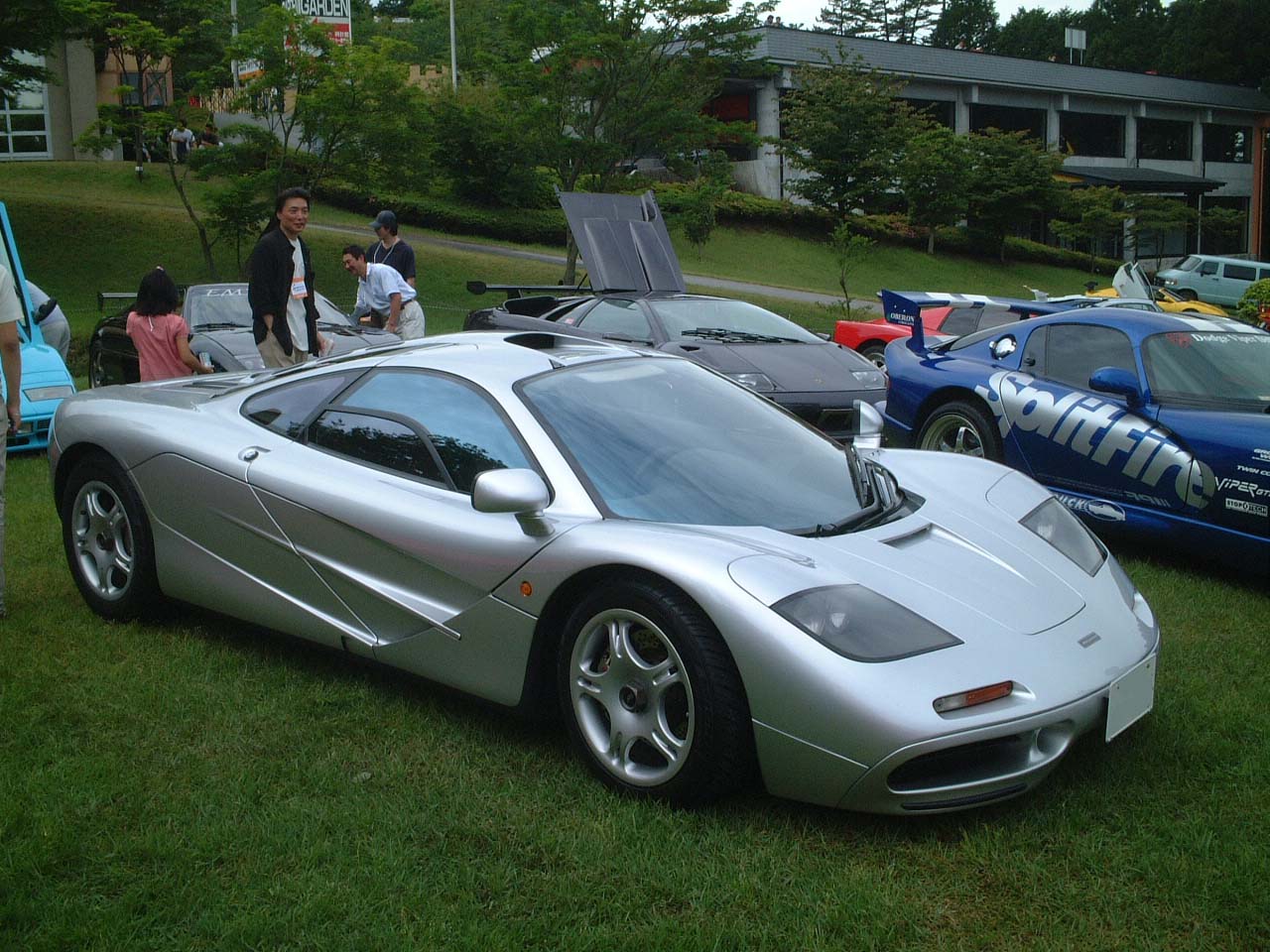
In 1988, Gordon Murray, a successful Formula 1 racecar designer, came up with the design for a lightweight, high powered, 3 seat supercar while waiting for a flight after the Italian Grand Prix. He drew a sketch and presented his idea to Ron Dennis, CEO of the McLaren Group. Based on this idea the subsidiary McLaren Cars (now McLaren Automotive) was formed to build road cars based on the technology and experience of the McLaren Group's Formula 1 efforts. In total, just 100 cars would be built which included 28 race versions. The McLaren F1 held the title of the fastest (top speed) production car ever built for over 10 years and turned out to be one of the greatest, if not the greatest, supercar ever produced.
Early development consisted of a pair of "mules" built from Ultima kit cars used to test components such as the gearbox and engine as well as cooling and exhaust. These "mules" were destroyed to avoid any info being leaked to the press and to avoid the production cars being associated with the kit car industry. Murray was insistent that the engine for the car be naturally aspirated and initially approached Honda to supply an engine capable of 550HP based on their F1 powerplants. Honda at the time was the dominant force in F1 and they had a well known reputation for making reliable engines. Honda, however, refused and BMW eventually agreed to supply a 6.1L V12 built by the BMW M motorsport division. The engine produced 627HP and 480TQ with a redline of 7500rpm. The car used a transverse 6 speed manual transaxle and limited slip differential. Murray had apparently wanted to use carbon ceramic brakes on the car but that was an unproven technology at the time. They settled for non power assisted 13.1 inch front and 12.0 inch rear discs with 4 piston calipers.

The car's body and chassis were made of exotic materials like carbon fiber, titanium, magnesium, and even gold. The gold was used in the engine bay as insulation from the heat of the huge V12. The car was also one of the first production cars to feature a full carbon fiber monocoque chassis. The McLaren made use of active aerodynamics which included a automatically adjustable power rear spoiler along with an underbody tray to maximize downforce. Driver controlled electric fans were also employed to decrease pressure under the car in order to further increase downforce. Inside, the McLaren F1 had an unusual seating arrangement. There was room for the driver and two passengers. The driver sat in the center of the car and to the left and right, offset toward the rear of the car, are the passenger seats.
On May 28, 1991 the car was debuted at a launch party in Monaco. Five prototypes of the road car were built for testing prior to the car being offered for sale. The first car crashed and rolled over during testing but the test driver was able to walk away thanks to the strength of the car's construction. The second prototype was also destroyed during crash testing. The remaining prototypes were used for publicity and testing by journalists. The first cars sold to the public arrived in 1994 and production continued through 1998. The purchase price exceeded $1 million.
The production McLaren F1's performance was simply out of this world. The car could rocket to 60mph in 3.2 seconds, 100mph in just 6.3 and 200mph in 28 seconds. Stock, the car has an unbelievable top speed of 231mph. On March 31, 1998 the final prototype (now over 5 years old), chassis number XP5, set off on the Volkswagen test track in Wolfsburg, Germany with it's rev limiter bumped up. The result was a production car world record top speed of 243.08mph. That record stood until the Bugatti Veyron blasted to a 253mph record on the same track in 2005.
This performance is attributed not only to the massively powerful V12 engine but also to Gordon Murray's dedication to making the car as light as possible. His goal was a weight of 1000kg and the production car actually came in at a weight of around 1140kg (2513lbs). This slight increase in weight was more than offset by the powerful BMW V12 which produced 627HP, a bit more than the 550HP Murray had requested.

1995 McLaren F1 LM
There were a few different variations of the F1 throughout it's production run. McLaren produced 65 examples of the road car including one that sat in the McLaren London showroom for almost 10 years until it was sold in 2004 as a new car. There were five F1 LM models sold to commemorate the F1 GTR race car's win in the 1995 24 Hours of Le Mans. These cars featured further weight reduction, different aerodynamics which included a large fixed rear wing, a different transaxle, and 18 inch magnesium wheels. The cars also used the same engine as the race car but with more horsepower, 680HP, due to the deletion of the race required restrictors. All of the F1 LMs were painted Papaya Orange in tribute to Bruce McLaren. Two F1 GTs were built to satisfy homologation rules for the FIA GT Championship. These cars featured extensively reworked bodies which included a extended rear tail and wider fenders. The remaining 28 cars produced were all F1 GTR race cars.

McLaren F1 GT
The McLaren F1 is one of those rare cars that became a legend the instant it was produced. It was simple yet at the same time a technological marvel. Time was not needed to make it desirable and hindsight was not necessary to see it's impact on the automotive world. It's effects were instantaneous and it's place in automotive history secured.

















No comments:
Post a Comment